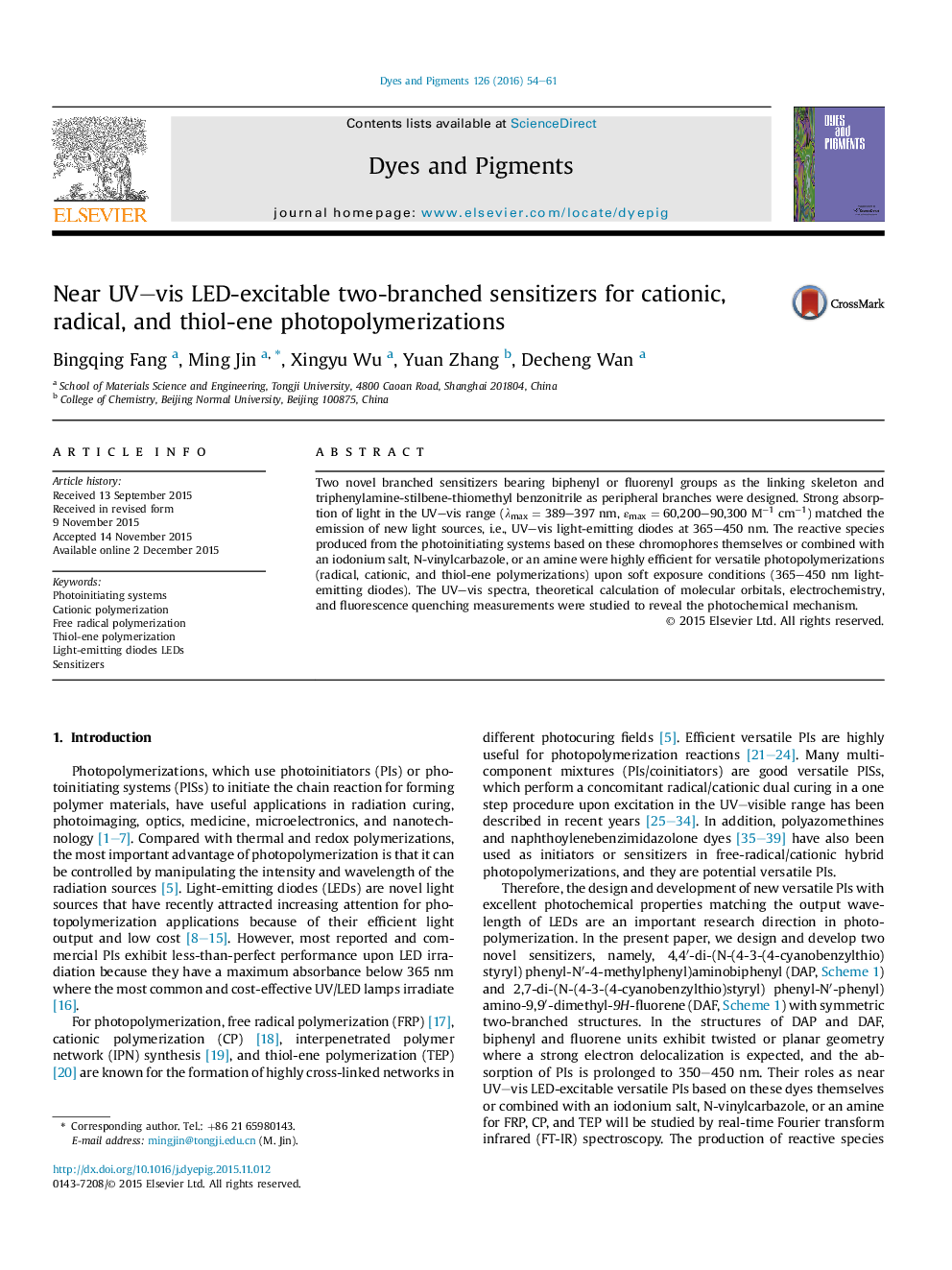| Article ID | Journal | Published Year | Pages | File Type |
|---|---|---|---|---|
| 175603 | Dyes and Pigments | 2016 | 8 Pages |
•These two two-branched sensitizers have high maximum molar extinction coefficients values.•These two sensitizers match the emission of new light sources, i.e., UV–vis LEDs at 365–450 nm.•The photoinitiating systems based on the sensitizers are highly efficient for versatile photopolymerizations.
Two novel branched sensitizers bearing biphenyl or fluorenyl groups as the linking skeleton and triphenylamine-stilbene-thiomethyl benzonitrile as peripheral branches were designed. Strong absorption of light in the UV–vis range (λmax = 389–397 nm, εmax = 60,200–90,300 M−1 cm−1) matched the emission of new light sources, i.e., UV–vis light-emitting diodes at 365–450 nm. The reactive species produced from the photoinitiating systems based on these chromophores themselves or combined with an iodonium salt, N-vinylcarbazole, or an amine were highly efficient for versatile photopolymerizations (radical, cationic, and thiol-ene polymerizations) upon soft exposure conditions (365–450 nm light-emitting diodes). The UV–vis spectra, theoretical calculation of molecular orbitals, electrochemistry, and fluorescence quenching measurements were studied to reveal the photochemical mechanism.
